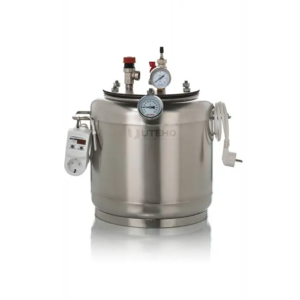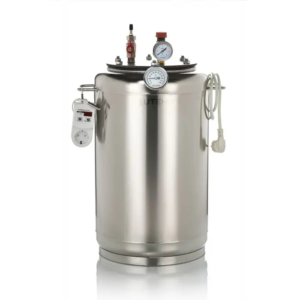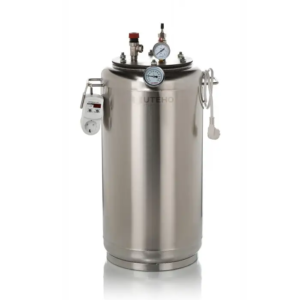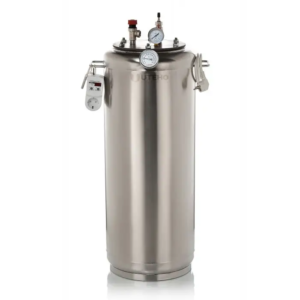How a home autoclave works
An autoclave is a device that ensures the destruction of bacteria, viruses and germs through a sterilisation process. The autoclave generates high pressure and temperature for a predetermined time. The temperature for complete sterilisation for food preparation is usually 110-120c.
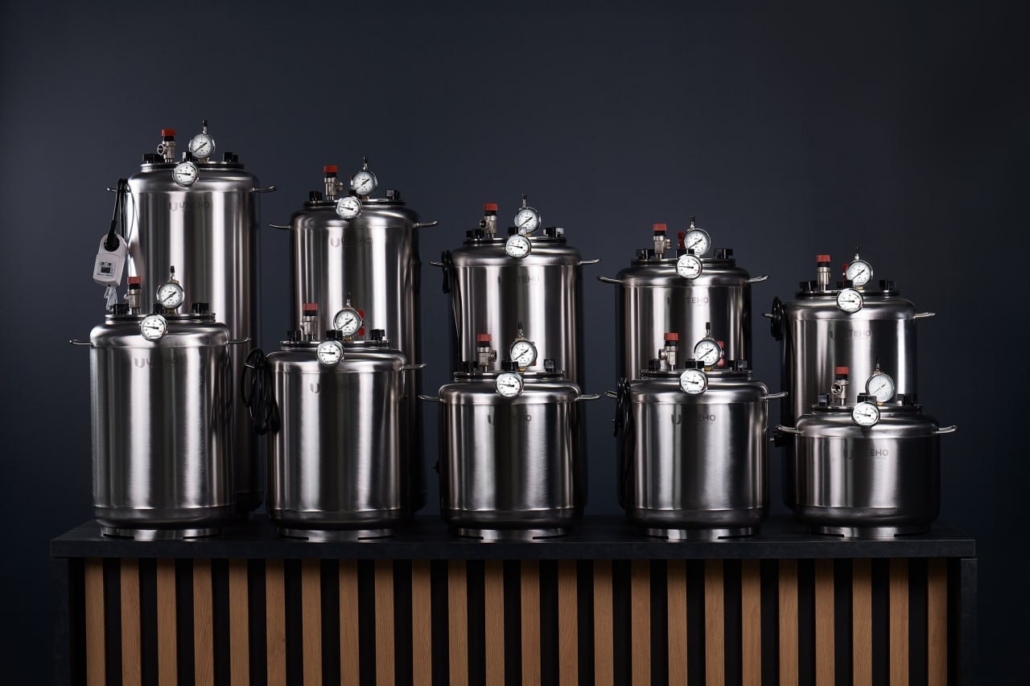
Autoclaves are divided into two main categories: steam and water autoclaves. The principle of how they work is similar, but there are some differences:
- The amount of liquid used;
- Heating and cooling time.
Metal autoclaves and very reliable equipment. For domestic use, car bottles with a capacity of up to 18L are mostly used. In recent years, larger devices with a capacity of 22-25 litres have gained popularity. There are models with capacities up to 46 litres. Even larger devices are rarely used in domestic settings.
How autoclave works
The basic principle of operation is the heating of products or objects to be sterilised under high pressure. The boiling point of the water in the autoclave chamber is raised under high pressure. With this device, the boiling point of water can reach up to 125 °C. Under normal atmospheric conditions, such a result would be impossible to achieve.
The elevated temperature allows the canning process to be speeded up and sterilisation of the product takes place, where harmful micro-organisms, moulds and bacteria are destroyed.
The way an autoclave works can be illustrated in three steps:
- Heating;
- Sterilisation;
- Cooling.
The canned products are taken out of the thawed autoclave and stored in a dry place, away from direct sunlight. Products made with autoclave do not need to be refrigerated . Typically, canned foods prepared in autoclaves will remain edible for 2-10 years, metal ones even longer. It is important to make sure that all the ingredients used in the recipe are not perishable and are suitable for canning.

